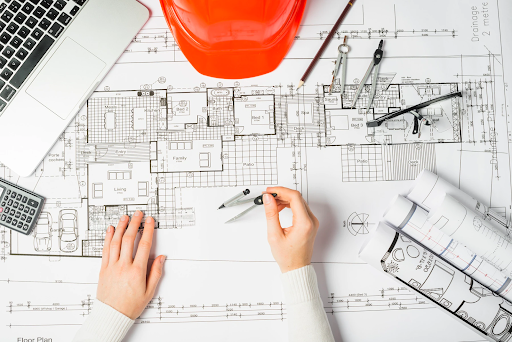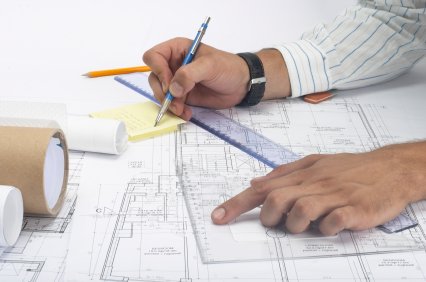Architect Checklist for Upcoming Commercial Projects
Architect Checklist for Upcoming Commercial Projects
Blog Article
Understanding the Diverse Job Paths Available for Aspiring Architect
As an ambitious Architect, you have a globe of profession courses waiting for you. Whether you're drawn to traditional style or the subtleties of lasting layout, there's a specific niche that straightens with your rate of interests.
Conventional Style: Creating Frameworks and buildings
Typical design focuses on designing buildings and frameworks that mix performance with aesthetic allure. Your designs can reflect social heritage, showcasing local practices while fulfilling modern requirements.
You'll develop skills in composing, model-making, and site evaluation, allowing you to visualize and communicate your concepts properly. Engaging with customers, you'll need to recognize their vision and convert it into possible designs.
In addition, building codes and sustainability practices are vital in your work, ensuring your structures are ecologically pleasant and secure. As you expand in your occupation, you'll find chances in property, industrial, or also repair jobs, each offering special challenges. Accepting conventional architecture leads the way for a satisfying profession that pays tribute to the past while shaping the future.
Urban Preparation: Forming Communities and Public Spaces
As a hopeful Architect, you can play a vital role as a city organizer, changing exactly how neighborhoods connect and work. By utilizing area involvement techniques, you'll ensure that locals have a voice in shaping their setting. And also, integrating lasting layout principles will assist develop spaces that not just satisfy today's needs yet also protect the future.
Function of Urban Planners
While many could think about designers as the sole enthusiasts behind buildings, urban planners play an important function fit the wider landscape of areas and public areas. They examine land usage, zoning laws, and community needs to develop sustainable atmospheres that boost lifestyle. By teaming up with different stakeholders, you'll aid develop parks, transportation systems, and suburbs that advertise social communication and availability. Urban organizers additionally concentrate on environmental factors to consider, making certain that developments incorporate eco-friendly areas and support biodiversity. Your proficiency in spatial design and area dynamics enables you to imagine future development while protecting cultural heritage. In this important duty, you'll directly influence exactly how people experience their environments, making every task a chance for positive adjustment.
Community Involvement Techniques
Reliable area engagement methods are vital for city organizers to guarantee that the voices of locals are heard and valued in the planning process. To cultivate purposeful discussion, you must focus on open online forums and workshops where community participants can express their ideas and problems. By proactively incorporating and listening feedback, you'll develop rooms that mirror the area's demands, ultimately leading to even more sustainable and successful city environments.
Lasting Design Concepts
When designing metropolitan rooms, integrating lasting layout concepts is important for developing settings that thrive both environmentally and socially. Think about integrating green areas, like yards and parks, to improve biodiversity and enhance air top quality.
Creating with water preservation in mind is likewise vital-- consider rain gardens and permeable surface areas to take care of stormwater. Involving community participants throughout the preparation procedure guarantees that the spaces you create meet their requirements and encourage social communication. By embracing these concepts, you'll add to vibrant, sustainable city landscapes that profit every person.

Landscape Style: Creating Sustainable Outside Atmospheres
As you discover landscape style, you'll find vital design principles that create practical and stunning exterior spaces. Lasting techniques play a vital role in ensuring these settings thrive while decreasing ecological impact. Plus, you'll find a range of occupation possibilities that allow you to make an actual distinction in just how individuals engage with nature.
Design Principles in Landscape
Comprehending style concepts in landscape design is vital for producing sustainable exterior environments that harmonize with nature. You'll need to ponder elements like range, balance, and proportion to ensure your layouts feel cohesive and inviting. Additionally, pay attention to seasonal modifications, developing with products that match the environments year-round.
Lasting Practices Introduction
Lasting methods in landscape style not only concentrate on aesthetics however likewise prioritize ecological health and wellness and resource conservation. By incorporating indigenous plants, you boost biodiversity and lower the requirement for chemical plant foods and chemicals. Executing effective irrigation systems aids save water and reduces runoff, protecting close-by communities. You can create rooms that promote soil wellness, such as practicing and utilizing natural products permaculture concepts. In addition, including eco-friendly framework, like rainfall gardens and porous sidewalks, aids in stormwater management and decreases urban warmth. You contribute to a much healthier earth and provide spaces that promote area connection when you develop outside settings with sustainability in mind. Inevitably, these practices guarantee your layouts benefit both people and the atmosphere for years to find.
Profession Opportunities Exploration
With a strong structure in lasting methods, landscape architecture provides a variety of profession paths that allow you to make a meaningful impact on the environment. Urban coordinators frequently work together with landscape designers to create green areas in city settings, enhancing city livability. If you're enthusiastic concerning education, think about ending up being a landscape architecture teacher, inspiring future generations.
Lasting Layout: Concentrating On Eco-Friendly Practices
As you discover your career in design, embracing environment-friendly practices can set you apart in an affordable area. Lasting layout concentrates on creating buildings that reduce environmental effect while boosting resident health. more helpful hints By integrating sustainable materials, energy-efficient systems, and sustainable building methods, you'll add to a greener future.
Start by getting knowledge of environment-friendly accreditations like LEED or BREEAM, which can boost your credentials. Consider how natural light, air flow, and thermal effectiveness can optimize design. Team up with designers and environmental professionals to introduce options that lower waste and conserve resources.
Do not fail to remember the value of neighborhood participation-- engaging regional stakeholders can inspire designs that harmonize with the atmosphere. As customers significantly prioritize sustainability, your proficiency in green methods will not only bring in projects but additionally meet your interest for accountable style. Accept this crucial facet of the profession, and enjoy your job prosper.
Historical Preservation: Securing and Bring Back Cultural Heritage
While you commence on your architectural journey, consider the important function of historic preservation in maintaining our cultural heritage. This area concentrates on the security and remediation of considerable structures, websites, and frameworks that inform the stories of our past. By taking part in historical conservation, you'll aid secure the architectural legacy that shapes area identity.
As a historical conservation Architect, you'll evaluate historic value and evaluate the problem of frameworks. You'll work closely with chroniclers and conservationists to ensure authentic remediation methods are utilized. This profession path permits you to blend creativity with study, allowing you to develop services that value original products and craftsmanship.
Your job not only adds to sustainability by recycling existing structures yet additionally fosters a sense of satisfaction within communities. Accepting this course will certainly aid you come to be a guardian of background, protecting the tales and visual appeals that improve our lives.
Inside Architecture: Enhancing Indoor Spaces
Historic conservation and indoor style both share a commitment to enhancing the developed environment, but they focus on various facets. While historical preservation highlights maintaining a framework's historical and social value, interior architecture zeroes in on maximizing indoor rooms for functionality and looks.
As an aspiring Architect, you'll locate that indoor architecture allows you to blend imagination with technological skills. You'll design spaces that not just look great but additionally advertise convenience and effectiveness. This area involves comprehending exactly how light, color, and products connect within a space, affecting state of mind and functionality.
You'll service different tasks, from property homes to industrial workplaces, making sure that each setting satisfies the needs of its passengers. By see this here focusing on individual experience, you can change insides into motivating and useful spaces, making a substantial impact on how individuals engage with their surroundings. Accept the possibility to enhance indoor settings and form the method people function and live.
Industrial Style: Merging Performance With Aesthetics
Commercial style plays a necessary role in producing items that seamlessly mix appearances with capability, guaranteeing that what you make use of day-to-day is not just aesthetically attractive but also useful. As an ambitious Architect, you might involve yourself in this field, concentrating on making whatever from furnishings to consumer electronic devices. Your work entails comprehending user demands, materials, and producing processes, allowing you to develop innovative services that improve everyday experiences.
In commercial design, you'll often team up with suppliers, designers, and marketers, guaranteeing that your designs are not only attractive but also possible. You'll find out to stabilize kind and feature, focusing on usability without giving up style. By developing your abilities in sketching, 3D modeling, and prototyping, you'll be well-equipped to bring your ideas to life. This job course offers a dynamic setting where imagination fulfills practicality, making it a satisfying selection for engineers thinking about shaping the products of tomorrow.
Often Asked Concerns
What Educational Qualifications Do I Need to Come To Be a Designer?
To become an engineer, you'll need a professional degree in style, commonly a Bachelor's or Master's. Additionally, you'll need to complete an internship and pass the Architect Registration Assessment to exercise lawfully.
Are There Accreditation Demands for Various Architectural Occupation Paths?
Yes, there're qualification demands for various architectural paths. Architect. You'll need to pass exams, full teaching fellowships, and occasionally go after specialized training, relying on your picked focus, like landscape design, city layout, or historic preservation
What Software Program Skills Are Crucial for Engineers Today?

Just How Can I Gain Practical Experience While Examining Architecture?
You can get functional experience by interning at building companies, taking part in style competitions, volunteering for community projects, or working together with schoolmates on real-world assignments. These possibilities improve your skills and construct important connections in the industry.
What Task Opportunities Exist Outdoors Traditional Style Firms?
You can check out numerous work opportunities outside traditional architecture firms, like metropolitan planning, interior decoration, landscape style, building monitoring, property development, or also duties in sustainability consulting. Each deals distinct obstacles and incentives.
Whether you're attracted to traditional style or the nuances of sustainable design, there's a particular niche that aligns with your rate of interests.When creating urban areas, integrating sustainable layout concepts is essential for producing environments that prosper both environmentally and socially.As you check out landscape architecture, you'll discover necessary design principles that produce lovely and practical exterior rooms.Recognizing style principles in landscape style is necessary for creating lasting outside environments Architect that balance with nature.In commercial design, you'll usually collaborate with marketers, designers, and manufacturers, making sure that your styles are not just gorgeous yet also feasible.
Report this page